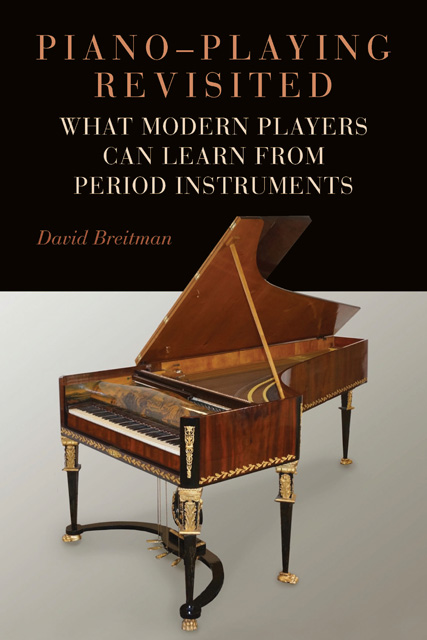Book contents
- Frontmatter
- Dedication
- Contents
- List of Illustrations
- Preface
- Acknowledgments
- 1 Music Making Then and Now
- 2 With Broad Strokes (An Overview)
- 3 The Early Days of the Piano: Haydn and Mozart
- 4 Beethoven and the Evolving Piano
- 5 Schubert
- 6 Chopin
- 7 The Clavichord
- Epilogue: Creativity in the Performance of Old Music
- Appendix: Overtone Structure of the Steinway and Walter, Compared
- Glossary of Terms
- Notes
- Bibliography
- Index of Works
- General Index
4 - Beethoven and the Evolving Piano
Published online by Cambridge University Press: 17 January 2023
- Frontmatter
- Dedication
- Contents
- List of Illustrations
- Preface
- Acknowledgments
- 1 Music Making Then and Now
- 2 With Broad Strokes (An Overview)
- 3 The Early Days of the Piano: Haydn and Mozart
- 4 Beethoven and the Evolving Piano
- 5 Schubert
- 6 Chopin
- 7 The Clavichord
- Epilogue: Creativity in the Performance of Old Music
- Appendix: Overtone Structure of the Steinway and Walter, Compared
- Glossary of Terms
- Notes
- Bibliography
- Index of Works
- General Index
Summary
Beethoven speaks to us so directly that it’s easy to ignore the distance separating our world from his. I want to re-situate him in his historical context, not as a prophetic genius ahead of his time, but as a practical musician whose compositions were conceived for performance by his contemporaries, for his contemporaries. First I will consider Beethoven’s relationship with the pianos of his time, then examine how those instruments illuminate issues of tempo, articulation, voicing, and pedaling.
Pianos changed significantly during the first part of the nineteenth century: one obvious development was the growing range of the keyboard. At the beginning of Beethoven’s career Mozart’s five-octave range (FF–f3) was still the norm, but the Erard that Beethoven acquired in 1803 had five-and-a-half octaves, FF–c4. By 1810 a six-octave range (FF–f4) was common, although by no means standard. Some makers offered a choice: through the 1820s Streicher and Graf made models with either six or six-and-a-half octaves (FF–f4 or CC–f4); g4 is found on some Grafs from the late 1820s but does not appear on Streichers until the mid-1830s. (None of Mendelssohn’s works requires the high G; Schumann uses it in a few pieces, including the C major Fantasy.) Many pianos of the 1850s had a seven-octave range, AAA–a4 (eighty-five notes); our familiar eighty-eight only became standard at the end of the nineteenth century.
In another notable development after 1805, Viennese builders began to replace knee levers with actual pedals, following the example of the English. More and more pedals were added, peaking in the 1820s when some instruments had as many as seven, including percussion and other special effects. This trend was relatively short-lived; by the 1840s, the usual arrangement was two pedals, one to raise the dampers and the other to shift the keyboard (una corda).
There is further evidence that the Viennese were eyeing the products of their English competitors. Czerny said of Streicher that “by imitating English instruments, he was able to give his own [pianos] a fuller tone and a firmer mechanism than older pianofortes had had.”
- Type
- Chapter
- Information
- Piano-Playing RevisitedWhat Modern Players Can Learn from Period Instruments, pp. 65 - 116Publisher: Boydell & BrewerPrint publication year: 2021



